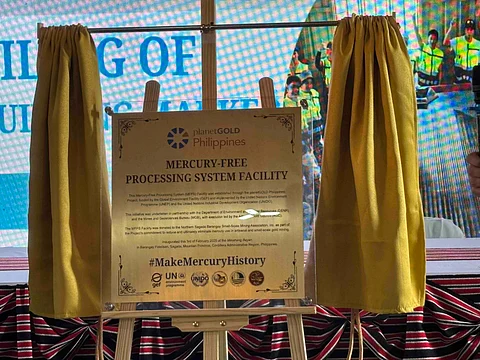Sagada’s mercury-free mining: A model for responsible processing
You may have first heard of Sagada from Angelica Panganiban and JM De Guzman’s film That Thing Called Tadhana, or perhaps through vlogs and documentaries showcasing its breathtaking landscapes, hanging coffins, lemon pie, and etag (a cured and smoked pork dish).
But beyond its tourist charm, Sagada is also home to miners who made a pivotal decision decades ago to go mercury-free, according to Abigail Ocate, national project manager of the Artisanal Gold Council (AGC) Philippines.
“Sagada has a rich and little-known history of mining,” Ocate said during a turnover ceremony. “What people don't realize is that this community made a groundbreaking decision decades ago. The miners here in Sagada have already understood the effects of mercury.”
Even before many countries moved to ban mercury in mining, barangay leaders, Indigenous elders, and miners in Sagada had already taken a stand against its use as early as the 1990s.
“They saw first-hand how it affected their agriculture and environment, and they chose a different path,” Ocate added.
“This is the proof that responsible mining is not just possible, but doable. Communities can lead the way in safeguarding the environment while preserving their traditions.”
Ocate highlighted that miners from the Northern Sagada Barangay Small-Scale Mining Association (NSBSSMAI) have demonstrated that mining can be done responsibly, without harming the environment or abandoning cultural heritage.
Mercury-free processing system
In a bid to secure mercury-free mining in Sagada, AGC Philippines on Monday officially turned over the ownership of its Mercury-Free Processing System (MFPS) to small-scale miners in Barangay Fidelisan. This facility enables gold recovery without using mercury.
Globally, nearly 40 percent of mercury pollution comes from artisanal gold mining. In many countries, including the Philippines, mercury is commonly used in small-scale gold mining, posing serious health and environmental risks.
Since 2020, Ocate said AGC has conducted consultations across 10 barangays in Sagada, including four downstream communities, in collaboration with local and regional agencies.
“After many meetings, the community made a critical decision — no chemicals should be used in gold processing,” Ocate emphasized.
“Real sustainable development isn't about imposing solutions, it's about listening to communities and respecting their choices,” she added, stressing that responsible mining happens when “communities are engaged, informed, and empowered.”
Josep Patil-ao Jr., president of NSBSSMAI, said the new facility would help miners operate more effectively and safely.
“This is a big step toward our dream of a clean, safer, and more professional small-scale gold mining sector in Sagada,” Patil-ao noted, adding that the project could also support the social development of their barangay.
The MFPS, part of the planetGOLD project, is a centralized gold ore processing facility within the Minahang Bayan of NSBSSMAI. With a capacity of three to four metric tons of ore per day, the facility aims to achieve at least 60 percent gold recovery.
The planetGOLD project, executed by AGC Philippines, aims to eliminate mercury use in the artisanal and small-scale gold mining sector by applying a value chain approach from miners to refiners. The five-year project is implemented by the United Nations Industrial Development Organization (UNIDO) and funded by the Global Environment Facility, in partnership with the Department of Environment and Natural Resources (DENR) and the Mines and Geosciences Bureau.
According to the International Monetary Fund, the Philippines is the 27th largest gold producer globally, employing around 300,000 to 500,000 people across 40 provinces. In Sagada alone, the average annual gold production is 2,200 metric tons.


